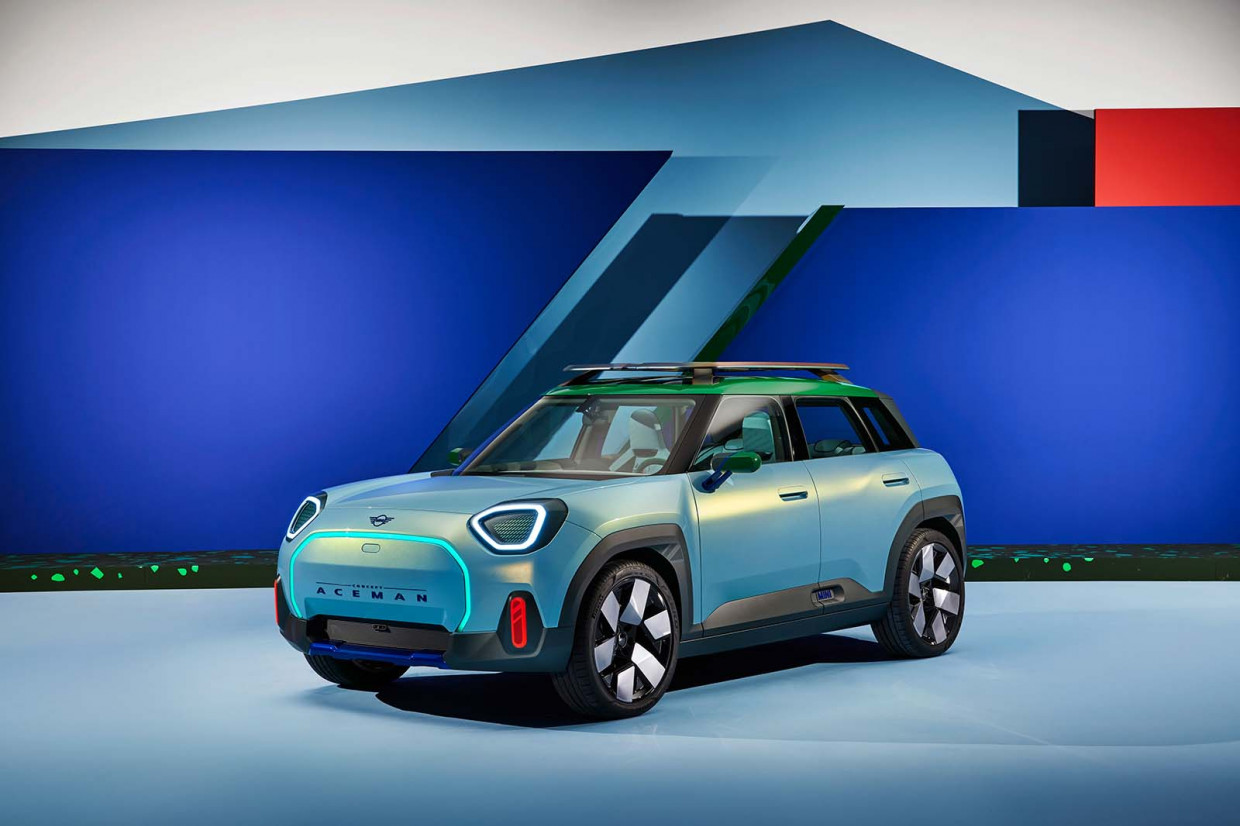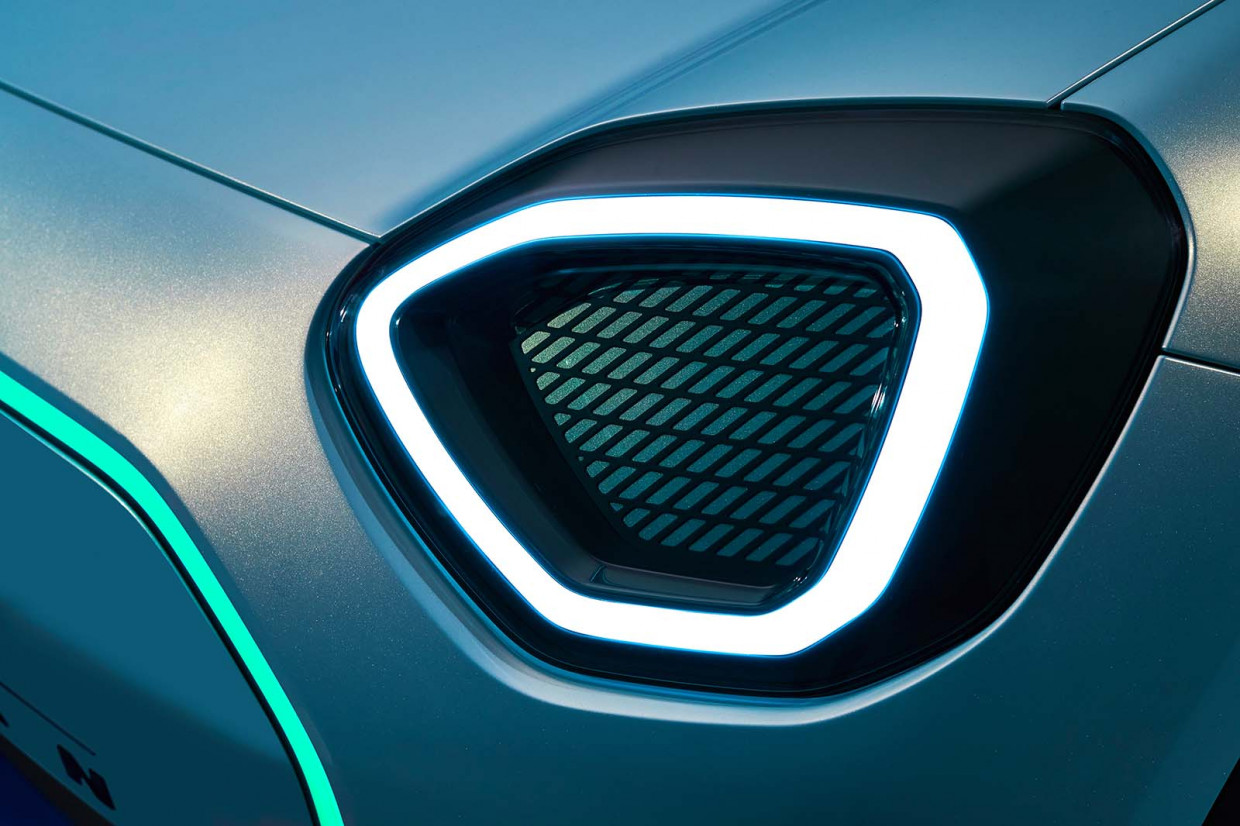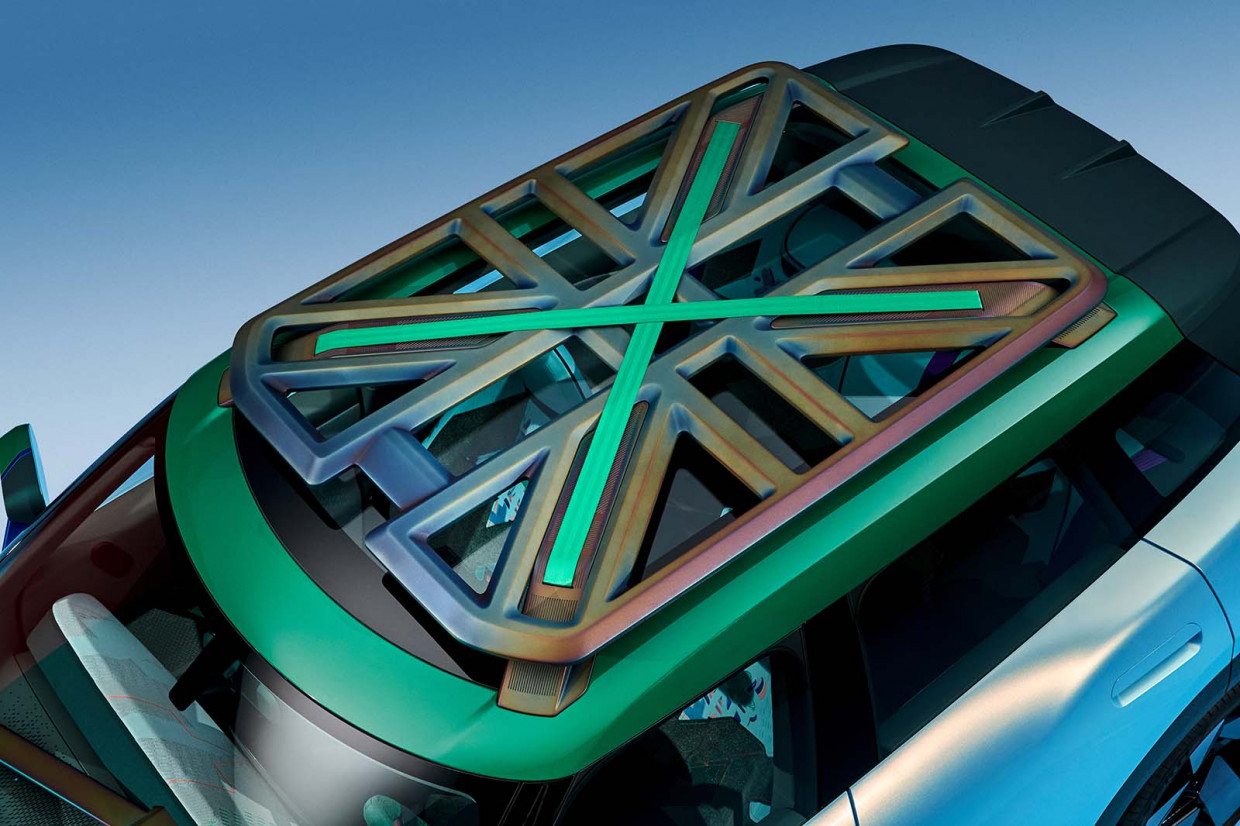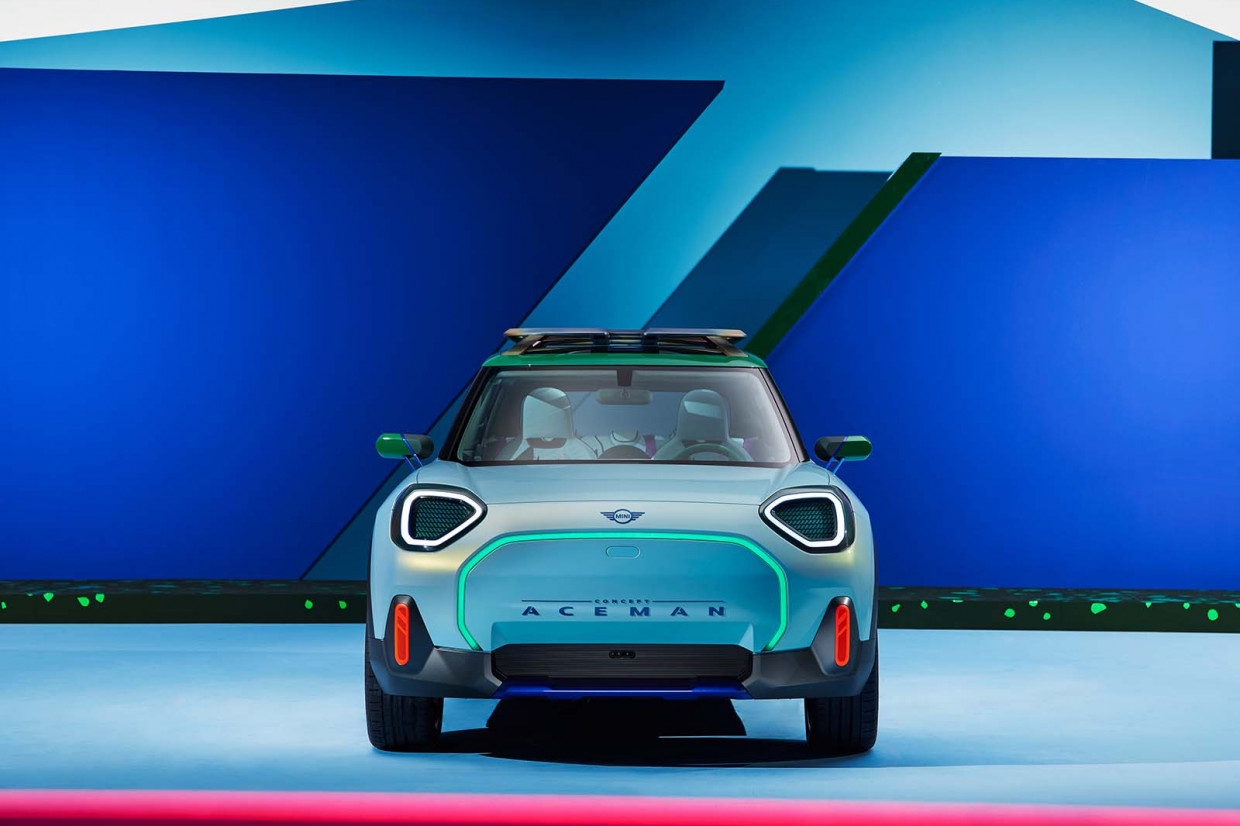
This is the new Mini Concept Aceman, which previews the firm’s first all-electric crossover – and is a key step on the brand’s reinvention as an electric-only marque.
The new machine is due to go into production in 2024, and will be built in China as part of a joint venture between Mini’s parent firm BMW and Chinese giant Great Wall. It will join the next-gen Mini three-door hatch in being offered purely with electric power. Mini is aiming to have an EV-only line-up worldwide by the early 2030s.

The Aceman takes the form of a compact crossover that effectively sits between the current Mini hatch and the larger Mini Countryman SUV – which will also gain a next-generation electric model. But while it will be smaller than the Countryman, the Aceman is expected to take a premium price point.
Notably, the Concept Aceman introduces a new design language for the brand that will be reflected in the coming Mini hatch and Countryman EVs, including a ‘responsible’ approach free of leather and chrome.

New Mini boss Stefanie Wurst described the Aceman concept “reflects how Mini is reinventing itself for its all- electric future and what the brand stands for: an electrified go-kart feel, an immersive digital experience and a strong focus on a minimal environmental footprint.”
The Aceman still has the traditional Mini design cues but introduces a new design principle which the firm calls ‘Charismatic Simplicity’. It has elements inspired by both the Mini hatch and Countryman, but with a design that takes advantage of the bespoke EV platform.
There’s a classic two-box design with short overhangs at the front and rear to maximise interior space. The machine is 4050mm long, 1990mm wide and 1590mm tall, pitching it in opposition with the likes of the Kia Niro EV and forthcoming Smart #1.



The traditional radiator grille now features a closed surface with integrated Matrix LED elements that are used to create lighting effects to ‘welcome’ occupants. The headlights have been redesigned from the traditional round shape into continuous contours, which pushes to the edges of the bonnet.
The styling features a flush transition between the body and glass windows, while the chrome trim often seen on Mini models has been completely removed. Meanwhile, there are wide surrounds on the vehicle’s lower edges and big wheel arches that use flat, geometrically modelled surfaces to give a sense of suggest SUV styling.
The exterior still features a number of traditional Mini styling cues, including a Union Jack motif in the rear light graphic and on the concept’s roof rack.

The concept sits on 20in alloy wheels, while the concept is finished in Icy Sunglow Green paint, which Mini claims is a ‘light turquoise shade diving into gold’. It’s designed to showcase that gold in varying levels of intensity depending on the light conditions. In another heritage nod, the concept’s roof is finished in a shade of British Racing Green.
The interior features a minimalist design, including a cockpit that Mini claims has been reduced to ‘the bare essentials’. The flat dashboard and extends the width of the interior and is covered in a knitted textile surface. It’s connected by a support structure featuring another Union Jack design.

In another classic Mini design cue, the central touchscreen is a large, round design – in fact, Mini claims it’s the first circular OLED display offered in a car. It can be controlled by touch and voice control and has a completely new operating system which, for the first time, is built on an Android Open Source Platform.
The display area extends beyond the central interface, allowing moving image projections that extend right into the door panels.
Still, it isn’t all fancy touchscreens: in fact, the Aceman retains a classic Mini toggle switch bar below the screen. The toggles operate the parking brake, select gears, ‘Experience Modes’ and the volume.

Experience Modes? Oh yes. They combined specific displays, colour ‘worlds’ and sounds to offer a personalised driving experience. You can even add your own image motif to the OLED display. There’s also a Pop-Up Mode that will offer ‘eventful’ navigation – by which we think Mini means taking you to fun places by searching for ‘Trending’ destinations and the like.
Then there’s Vivid Mode, which is designed as an entertainment function when you’re stopped at traffic lights or taking a short brake, and allows you to create coloured ‘letter bubbles’ on the central interface.
Moving the gear selector and parking brake to the toggles has freed up the space between the driver and passenger seats, which Mini has used for a ‘flexible’ centre console with a free-floating design that extends into the rear area. It features adjustable storage compartments, including a wireless smartphone charger and cupholder.

The concept also features an entirely leather-free interior, instead featuring other materials including a steering wheel rim laminated with dark green velvet velour.
No technical details of the Mini Aceman have been released yet.
The Aceman title is a new nameplate for Mini, although it echoes the Paceman, a short-lived three-door crossover that was developed as a smaller version of the Countryman and sold from 2013 until 2016. Mini is understood to have considered using the Paceman name for the new crossover.
Unusually, and likely hinting at the audience Mini is targeting, the Concept Aceman will make its public debut at the Gamescon video game fair in Cologne, Germany next month.

READ MORE
Subscribe to the Move Electric newsletter
e-CARS
UK charging networks: complete guide to every provider
New Cupra UrbanRebel is a bold EV supermini with 273-mile range
e-BIKES
10 fun things to try on an electric bike
Living with a Gocycle G4: how easy is it to adjust to?
e-MOTORBIKES
Seat Mó eScooter 125 UK review
How to do a CBT on an electric motorbike
Energica unveils new Experia electric tourer motorbike
e-SCOOTERS
Are e-scooters legal in the UK?
Private e-scooter rules 'cannot simply copy' rental regulations
Superpedestrian's European boss on why e-scooters are for everyone
e-WORLD
New Candela P-12 Shuttle to arrive as first electric ‘flying’ ferry
Pipistrel Velis Electro: meet the first certified electric plane
